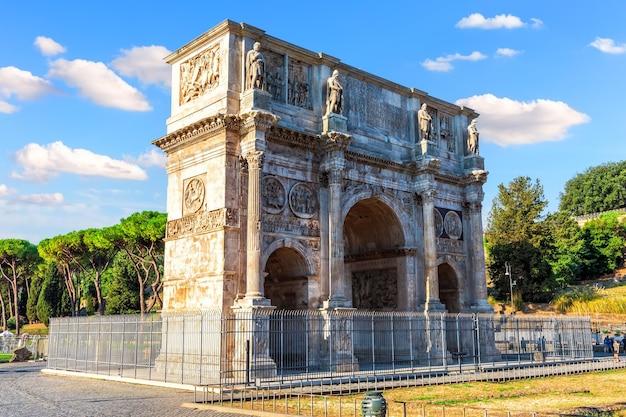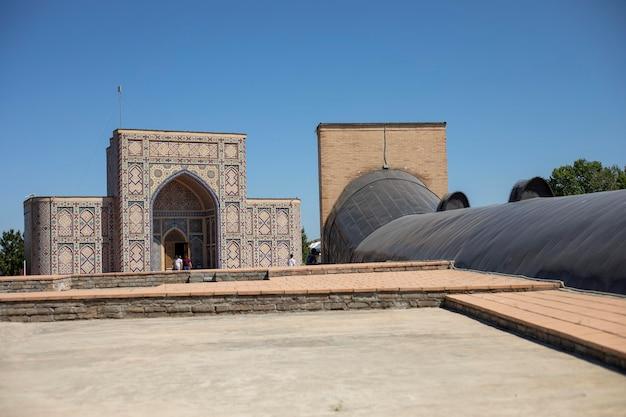Historical monuments are more than just architectural structures; they are windows into our past, telling stories of our heritage and culture. They hold invaluable historical, artistic, and cultural significance, connecting us to the people, events, and ideas that shaped our present. That’s why it is crucial to preserve these majestic remnants of the past for future generations to explore and appreciate.
Tourism undoubtedly plays a significant role in the preservation of historical monuments. However, it also raises questions about its positive and negative impacts on local culture and the environment. Balancing the benefits of tourism with the preservation of cultural integrity is a challenge that requires careful planning and sustainable practices. In this blog post, we will delve into the importance of preserving our historical monuments, examining both the positive and negative effects of tourism and providing insights into preserving world heritage sites that are in danger.
So, join us as we explore the significance of preserving our historical monuments and the steps we can take to protect and cherish our past in this rapidly changing world.

Why Preserving Historical Monuments Matters
Preserving historical monuments is not just about preserving a pile of old stones or bricks; it’s about safeguarding our cultural heritage and embracing the stories of our past. These magnificent landmarks are more than mere structures; they represent the triumphs, struggles, and progress of our ancestors. Here are some compelling reasons why it is crucial for us to protect and honor these timeless treasures.
A Window into the Past
Historical monuments offer us a glimpse into the lives and experiences of those who came before us. They serve as a time capsule, allowing us to connect with different eras, civilizations, and historical events. By exploring these sites, both locals and tourists alike can immerse themselves in the rich narratives that have shaped our society. It’s like stepping into a real-life history book, only more exciting!
Preserving Cultural Heritage
Our historical monuments embody the unique characteristics and artistic achievements of past generations. They reflect the cultural diversity and values that have shaped our nation. By preserving these structures, we ensure that future generations can learn from and appreciate the beauty, craftsmanship, and innovative ideas of their predecessors. Plus, who doesn’t love a little architectural eye candy?
Fostering a Sense of Identity
These landmarks play a significant role in shaping our collective identity. They are part of our shared heritage and contribute to our sense of pride and belonging. When we preserve historical monuments, we celebrate our roots and honor the countless individuals who laid the foundation for our present-day society. So go ahead, salute those long-gone heroes every time you pass by a statue or monument—cue the dramatic salute!
Boosting Tourism and the Economy
Let’s not forget about the enormous economic benefits! Historical monuments are a magnet for tourists from around the world. Visitors flock to these iconic sites, bringing in revenue for local businesses, hotels, and the community. Imagine strolling through a historic district, savoring tasty treats from food vendors, and indulging in some guilt-free souvenir shopping. It’s a win-win: preserving our history while stimulating the economy!
Encouraging Education
Teaching history can sometimes be a challenge, but historical monuments provide an excellent opportunity for educators to bring the past to life. By incorporating field trips to these sites, teachers can make history more engaging and relatable. Students get to see, touch, and feel the remnants of the past, making their learning experience more memorable and meaningful. Learning about history shouldn’t have to feel like a punishment, right?
Inspiring Continued Progress
Lastly, historical monuments inspire us to strive for continued progress and greatness. They serve as a constant reminder of the trials and triumphs our ancestors endured. By acknowledging and learning from their stories, we become motivated to create a better future for ourselves and later generations. So let those monumental symbols of the past light a fire under you—the world is waiting for your remarkable achievements!
In Conclusion,
Preserving historical monuments is not just a frivolous endeavor; it’s an investment in our culture, education, identity, and economy. By protecting these precious relics of the past, we honor the contributions and sacrifices of those who came before us. So let’s join hands, raise awareness, and ensure that these historical gems are cherished and safeguarded for generations to come. Remember, history doesn’t have to be dull—it can be your ticket to a wildly entertaining journey through time!

FAQ: Why is it important to preserve our historical monuments?
Preserving our historical monuments is not only an act of cultural responsibility but also a means to honor our past and embrace our heritage. In this FAQ-style subsection, we will explore the importance of preserving these monuments, the impacts of tourism on culture and the environment, and how we can mitigate any negative effects.
What are the positive and negative effects of tourism on culture
Tourism has both positive and negative effects on culture. On the positive side, it fosters cultural exchange and promotes understanding among different communities. It allows for the preservation and promotion of local traditions and crafts. However, tourism can also lead to cultural commodification and a loss of authenticity. It’s important to strike a balance between welcoming visitors and preserving cultural integrity.
How can we prevent the negative impact of tourism
To prevent the negative impact of tourism on culture, it’s essential to implement sustainable tourism practices. This can include limiting the number of visitors and spreading them throughout the year, promoting responsible tourism behaviors, and educating tourists about local customs and traditions. By investing in community-based tourism initiatives, we can ensure that the local population benefits from tourism while preserving their culture.
What are the benefits of preserving national heritage
Preserving our national heritage has numerous benefits. It serves as a reminder of our history and allows future generations to connect with their roots. Historical monuments also have educational value, teaching us about different eras, architectural styles, and cultural practices. Additionally, they contribute to tourism revenue and foster a sense of pride and identity among local communities.
Should a city preserve its old buildings
Absolutely! Preserving old buildings is crucial for maintaining a city’s unique character and historical identity. These buildings hold stories of the past and serve as a visual representation of our heritage. By preserving them, a city can attract tourists, boost the local economy, and create a distinct sense of place. Plus, who doesn’t love the charm of strolling through streets lined with beautiful historic architecture?
How would you describe a historical building
Historical buildings are like time capsules that transport us to another era. They come in various architectural styles, showcasing the craftsmanship of the past. From grand castles to modest cottages, historical buildings are characterized by their age, unique design elements, and cultural significance. Each one has its own story to tell, inviting us to unravel the mysteries of the past.
Should we preserve past historical buildings
Most definitely! Preserving past historical buildings is vital to safeguard our cultural heritage. These structures are witnesses to significant events and provide a tangible link to our ancestors. By preserving them, we honor their memory and ensure that future generations can appreciate and learn from the past. Let’s cherish and protect these architectural gems for the sake of our collective history.
Why is it important to preserve our historical monuments
Preserving our historical monuments is of utmost importance because they are irreplaceable treasures. These monuments serve as reminders of our shared history and cultural legacy. They give us a sense of identity, connecting us with those who came before us. Historical monuments are not merely lifeless structures; they breathe life into our cities and communities, inspiring awe and curiosity. Let’s preserve them, for they are the threads that weave our past into our present.
What are the positive and negative impacts of tourism and hospitality on the environment
Tourism and hospitality can have both positive and negative impacts on the environment. On the positive side, responsible tourism practices can promote environmental conservation and raise awareness about sustainability. However, the negative impacts include increased pollution, deforestation due to infrastructure development, and degradation of natural landscapes. It is vital to prioritize eco-friendly tourism initiatives and minimize our ecological footprint.
Should the government spend money on the restoration of old buildings
Yes, the government should invest in the restoration of old buildings. These buildings hold historical, cultural, and architectural significance, and their preservation benefits the entire community. Restoration projects not only create jobs but also enhance tourism, generating revenue for local businesses. By investing in the restoration of old buildings, governments demonstrate their commitment to preserving heritage and ensuring the enjoyment of future generations.
Does tourism destroy the environment
Tourism, if not managed responsibly, can have detrimental effects on the environment. Mass tourism often leads to increased waste, pollution, and strain on local resources such as water and energy. Activities like unregulated coastal development and wildlife exploitation can cause irreparable damage to ecosystems. However, with sustainable tourism practices and conscious traveler choices, we can minimize the environmental impact and protect the natural beauty that attracts tourists in the first place.
Why is it important to protect and preserve things with historical interest
Protecting and preserving things with historical interest allows us to maintain a tangible connection to our past. It enables us to learn from our history and shape a better future. By safeguarding historical artifacts, documents, and sites, we can understand the struggles and achievements of those who came before us. These objects’ historical interest lies not only in their physical value but in the stories they tell and the lessons they teach.
How can world heritage sites that are in danger be preserved
Preserving world heritage sites that are in danger requires concerted efforts from governments, organizations, and communities. Some measures include implementing stricter regulations, conducting regular maintenance, raising awareness through education campaigns, and involving local communities in conservation efforts. International cooperation and funding can also play a vital role in protecting and restoring these priceless sites. It is our collective responsibility to ensure that these gems of history survive for future generations to appreciate and cherish.
Preserving our historical monuments is a fundamental responsibility that ensures the continuity of our cultural heritage. By understanding the impacts of tourism, promoting sustainable practices, and allocating resources for restoration, we can protect these treasures and pass them on to future generations. Let’s celebrate our past and make a commitment to preserve the historical landmarks that shape our collective identity.
